Nike designs Space Hippie footwear to have "lowest carbon footprint scores ever"
Nike used factory scraps and recycled "space waste yarn" to create the Space Hippie sneakers in an experimental project to reduce the carbon impact of its products.
Each of the four different designs in the collection – named Space Hippie 01, 02, 03 and 04 – are made from scrap material taken from Nike's factory floors, which the brand has named "space junk", and other recycled materials.
The brand said that the result "is the creation of Nike footwear with our lowest carbon footprint scores ever".
"It is about figuring out how to make the most with the least material, the least energy and the least carbon," said John Hoke, Nike's chief design officer. "I'd say Space Hippie attacks the villain of trash."
"It's changed the way we look at materials, it's changed the way that we look at the aesthetics of our product," he added. "It's changed how we approach putting product together."
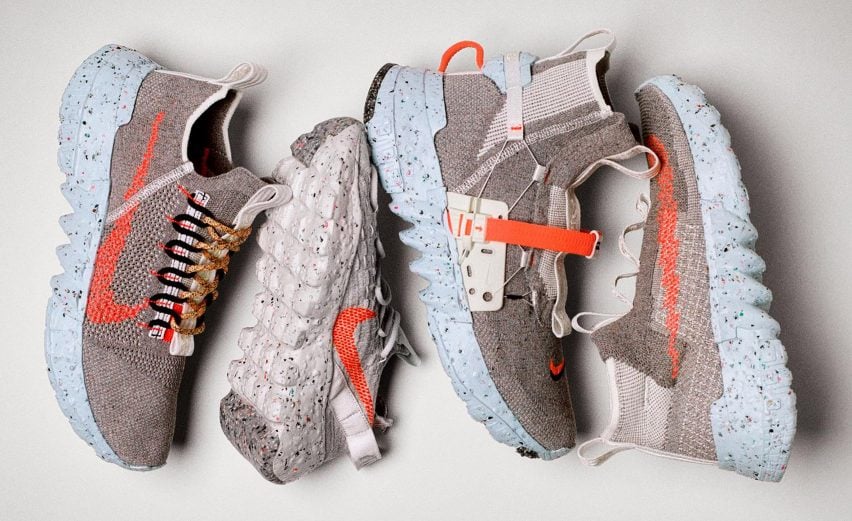
Nike said the shoe is a first step towards employing the process of the circular economy, which aims to eliminate waste and pollution from manufacturing.
"We believe the future for product will be circular," said Seana Hannah, vice president of sustainable innovation at Nike.
"We must think about the entire process: how we design it, how we make it, how we use it, how we reuse it and how we cut out waste at every step. These are the fundamentals of a circular mindset that inform best practices."
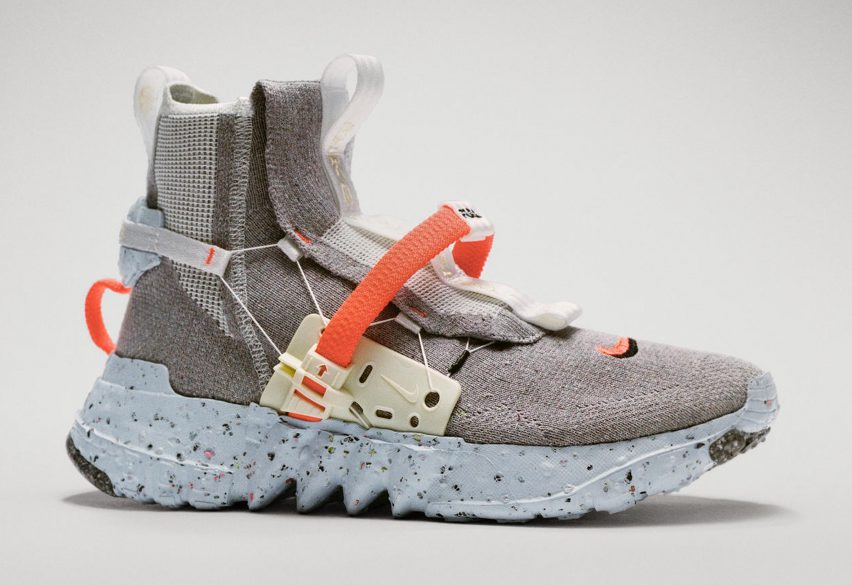
The upper part of Space Hippie, which resembles Nike's Flyknit design, is knitted from what Nike calls "space waste yarn". This is made from 100 per cent recycled material including plastic water bottles, T-shirts and textile scraps.
When combined with other design elements, Nike claims the shoe upper consists of a total of 90 per cent recycled content.
The middle, cushioning part of the trainer is made from surplus ZoomX foam taken from the production of the Nike Vaporfly 4% Flyknit running shoe. It was recently permitted for use in the Tokyo 2020 Olympics, while the shoe Eliud Kipchoge wore to break the two-hour marathon record was banned.
According to Nike, it repurposes this lightweight foam in a manner that uses around half the carbon dioxide equivalent as the creation of typical Nike foams.
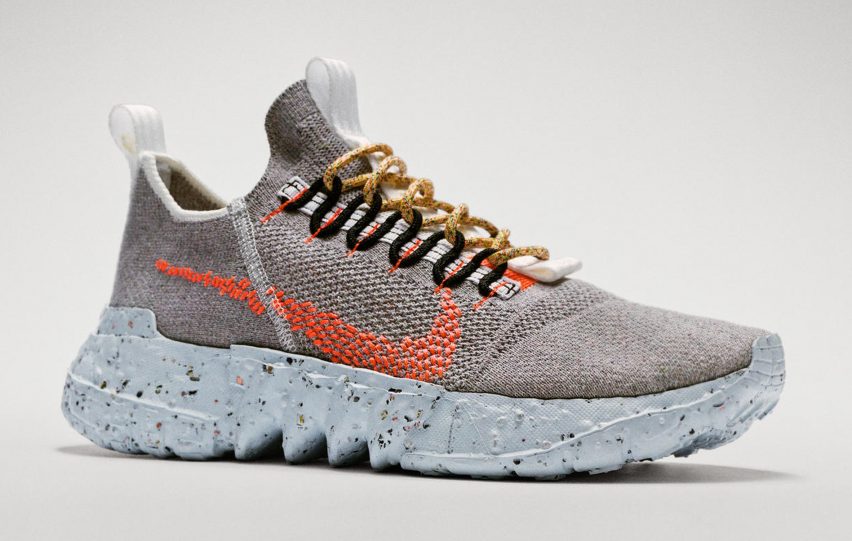
The outsole part of each shoe in the Space Hippie collection is built from "crater foam", made from a mixture of standard Nike foams and 15 per cent recycled waste rubber that has been ground down into granules, which Nike has branded as Nike Grind.
In addition to reducing the use of virgin materials, allowing for a lower carbon footprint, the use of Nike Grind also grants each shoe's midsole a unique texture and colour combination.
"Consider Space Hippie an example of advancing human potential," said Nike. "New benchmarks in use of recycled content set a new bar for responsible design. It challenges convention in material sourcing."
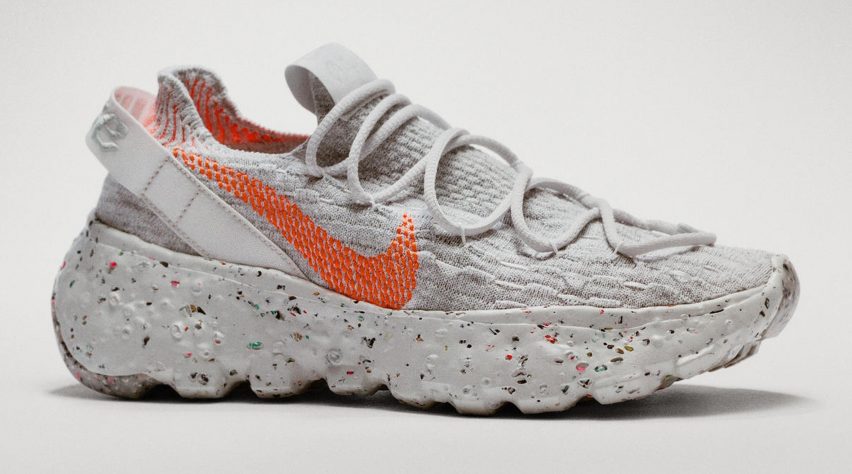
Nike based its project on the In-Situ Resource Utilization (ISRU) method employed in space travel. ISRU suggests that the further humans go into space, the more important it will be for them to use local materials to generate their own products.
"There's this idea in space exploration that if you're going to fly to the moon or fly to Mars and stay there and do something, you have to create things with what you find there," said Nike designer Noah Murphy-Reinhertz.
"They say there's no resupply mission coming to Mars – there's no resupply mission coming to earth either."
Hoke added: "The Space Hippie product line presents itself as an artefact from the future. It's avant-garde; it's rebelliously optimistic."
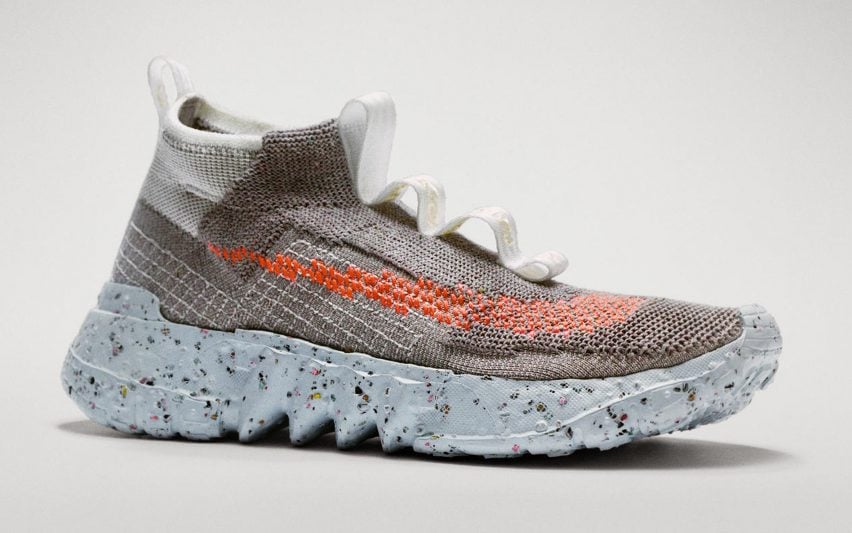
Space Hippie 01, 02, 03 and 04 will be available in spring this year for Nike members, as well as at Nike House of Innovation flagship locations and selected retailers.
Alongside the new Space Hippie shoe collection, Nike recently unveiled skateboarding uniforms for three countries competing in the sports' first-ever Olympic competition set to take place in the Tokyo 2020 summer games.
Created for the United States, France and Brazil, the colourful uniforms were designed in collaboration with Dutch artist and ex-skateboarder Piet Parra.